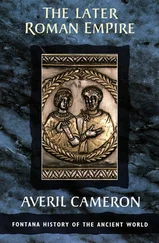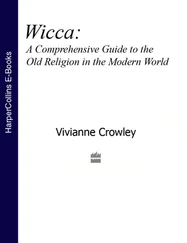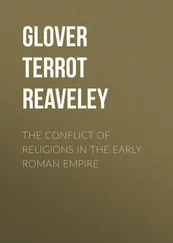Local elites, (dynasties of) religious specialists and the very mobile group of military personnel and merchants shaped the religious developments in the period in which the Roman Empire reached its greatest expansion—the 2nd century A.D. 110Structural and organisational changes in many sanctuaries reveal the changed political constellations and religious interests. 111However, the traditions that were alive at the various places had an impact on the actors of the established ones as well as on the newcomers. The power of their influence can be seen very well in the case of a new god, who had been worshipped since the turn of time: the divinised emperor (Fig. 12).
The cult of the divinised Roman emperor, which spread like fire in the Eastern provinces from the early imperial period onwards, was very popular. One of the reasons for this was that the ruler cult was no unknown cult in the eastern parts of the Roman Empire. Hellenistic ruler cults had been practiced there for centuries and the new Roman rulers could be worshipped in the same way—together with the local and imperial deities as a sign of loyalty and veneration. The initiative to worship the Divus often came from the local elites, who found various ways and forms of expression in the region of the Empire. The religious practice around the Roman emperor was one, which brought a new dimension into Roman religion in the 1st century A.D. and firmly fixed politics as an integrated part of Roman religious life. There was almost no religious activity not including the Roman emperor, despite the fact that some regions were slower and more resistant to the incorporation of imperial worship into their religious repertoire. When early Christ-followers in the 1st to 3rd century A.D. refrained from worshipping the emperor, the problem was less the choice of another god to be worshipped than the missing loyality towards the god-like ruler.
Early evidence for the worship of the first emperor Augustus and his successor Tiberius can be found in Asia Minor and Syria, and also in the West, such as in Gaul. Although not recognised by Augustus himself, he was widely worshipped as a god across the Empire and also did not obstruct such worship. 112The temple to Rome and Augustus in Ankyra is one example of such a sanctuary that was dedicated to him and the Dea Roma and shows that such non-official imperial worship held a central and important role in the religious landscape of the provinces. 113Some of the earliest evidence for institutionalised imperial cult comes from Gerasa where an inscription from the 20s A.D. tell us about a »former priest of Augustus«—who was Tiberius in this time. 114The altar which bears the inscription, was found close to the Sanctuary of Zeus most likely indicating that the imperial cult was integrated into the Sanctuary of Zeus Olympios, which was the main (and Hellenistic) cult of the city. This shows that religious life and sanctuaries were dynamic spaces and that although dedicated to one deity or more, further cults could have been celebrated there as well. 115Also in Lugdunum/Lyon it has not been determined, where the emperor cult took place, but there are reports on an altar for Caesar and Roma, dedicated in 12 or 10 B.C. 116If these hints to an early imperial worship are rather bleak, the material from other sites can transmit the impression and impact the imperial cult could have: In Narona/Vid (Croatia) a building particular for the veneration of the imperial house (and its representation) is preserved, where people from the city and the region could see and worship (the statues from Augustus to Vespasian, and from Livia to Agrippina Minor (Fig. 12). 117
In the Mediterranean East, in Iudaea, the establishment of several Augustea ( Kaisareia, Sebasteia ) goes back to Herod the Great, the client king of the still independent region in the early 1st century A.D. These sanctuaries are clear expressions of loyalty to Rome and the emperor. However, people did not always worship the emperor in newly erected temples. The majority of statues have been inserted into existing sanctuaries, apses or exedrae, without any elaborate new construction, which cannot be paralleled to worshipping the divinised emperors but influenced the perception of omnipresence at every important spot of public (also religious) life. Statues of the gens Iulia —the lineage of Caesar, Augustus and their successors—were found, for example, in the basilica at the forum of Corinth. 118Also at the forum of Ostia, close to the basilica, many portraits of emperors of the 1st century A.D. were found, so that a gallery can be assumed there. 119Likewise, religious specialists were often not only in charge of the emperor’s cult, but responsible for several cults. 120Cities in Asia Minor, Ephesus, Smyrna and Pergamum competed to have neokoroi , »guards«, i.e. priests for temples of the imperial family, in order to ensure appreciation and benevolence by the imperial court. 121On the Iberian Peninsula, where the emperors Trajan and Hadrian came from, temples for the imperial cult (Fig. 11) were built on the fora in Tarraco/Tarragona and Italica (Spain), closely interlocked with the administrative, mercantile and judicial functions of the cities. These patterns of an »embedded« imperial cult can also be found in smaller towns, such as Grumentum in southern Italy, where on the forum the Tempio C for the imperial cult is erected in Augustan times opposite the already existing temple for the Capitoline triad. 122Even if nothing is known precisely about the rituals, the layout and situation provide information about how this god and emperor appropriated existing forms of worship and were appropriated. 123
On the municipal level, it was rather the local associations of the Augustales who were in charge of worshipping the emperor, communicating among themselves and with other politically influential groups. The meeting place of the corpus of the Augustales at Misenum is a convincing example of this: Several statues by and for the emperors were financed by the collective in the 1st century A.D. and erected in the clubhouse. 124The inscriptions attest to the intense life of this group, whose influential members were also visibly active in other economic and political areas of the city, and were able to make rich donations for and in the name of the corpus . Only slowly the association of the Augustales opened up to new groups of people, as can be read in the inscriptions of the 2nd and 3rd centuries A.D.
At other places a shift to the inclusion of the divinised emperor into existing cults and places occured on smaller scales, though not less effective: A statue of Augustus replaced the city deity of Pergamon, Athena Polias, in her sanctuary on the Pergamene acropolis—moreover, a concerted action by »the citizens of the city« ( demos ) and of «the Romans residents« in the years 20/19 B.C. 125The emperor had to give permission for this, but the city administration financed the building and the cult operation. The correspondence of the city of Pergamon with Hadrian, who only allows a temple for his deified father Traian on the altar terrace, is evidence of the complex expression of loyalty to the emperor and Rome, the devotion of the emperor or a game of power and competition in the urban elites and between the cities. 126
Another politically highly charged example is the temple dedicated to Roma and Augustus, which was erected on the Athenian acropolis during the reign of Augustus. This was not just a religious act, but also a very political statement, since the relationship between the Roman emperor and Athens was not an easy one. Cassius Dio tells us about the Athena statue on the Acropolis turning towards Rome and spitting blood. 127
Religion was not always a space where peace and piety ruled; gods could take sides and act on behalf of their communities. Not least in the Greek world where they always had been associated with human qualities. For example, Greek gods could not multiply, they could only be present in one place at a time and therefore people needed to attract their attention and the attention was not a given, 128but something which needed to be asked for through religious practice and the performance of rituals.
Читать дальше












